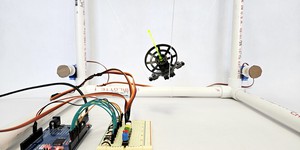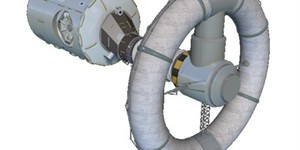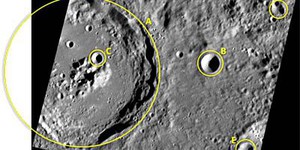Space Exploration Science Projects (55 results)
|
Select a resource
Coding Projects
Sort by
|
You might not think a chip of paint could cause a lot of damage, but what if it is traveling 18,000 miles per hour? That is the reality astronauts face on the International Space Station (ISS). Learn how engineers protect the ISS from space debris in this fun science project as you build your own model spacecraft shield and conduct your own impact tests!
Read more
The movement of satellites is intriguing, but how do they orbit the way they do? Aerospace engineers run calculations and set up computer models to help them predict how satellites move in space, but in this astronomy science project, you will create a physical model with marbles, clay, and a cookie sheet to help you study how satellites move in space and learn from your observations.
Read more
The idea of a colony on Mars is exciting! In this science project, you will tackle one of the challenges a Martian colony will face: what will buildings on Mars be made of? In this project, you will make bricks from Martian-like ground cover and measure how strong these bricks are.
Read more
How do you practice docking a spacecraft with the International Space Station or landing on Mars? With a room-sized cable-driven spacecraft motion simulator! In this project, you will build your own miniature, motorized version of a full-sized motion simulator scientists are developing that can move model spacecraft around in a controlled manner.
Read more
Have you ever wondered how astronauts land safely back on Earth? Many spaceships use a small crew capsule with multiple large parachutes to bring the astronauts down to a gentle landing either on the ground or in the ocean. What happens if one or more of the parachutes fails to deploy? Can the astronauts still land safely? Find out as you explore the physics of falling with parachutes in this project.
Read more
Did you know that in addition to the Sun and planets, our solar system is filled with millions of asteroids, which are chunks of rock left over from the early days of its formation, or from collisions between larger objects like planets? Agencies like NASA track asteroids, not only because they might pose a threat to humanity by colliding with Earth, but because they can provide us with information about the history of our solar system, and even be useful for mining raw materials in space! In…
Read more
Space exploration, living, and working in space exposes space travelers and their equipment to radiation not present on Earth. The study of how we can protect ourselves and our equipment is an essential part of space exploration. Although you will not be able to test at levels equivalent to what you might encounter in space, you can test with lower and safer levels of radiation in the lab or at your home.
There are many types of radiation. This project concentrates on ionizing radiation, or…
Read more
How can we make space stations with artificial gravity a reality? In this science project, you will explore the physics of creating artificial gravity with circular motion.
Read more
Have you ever wished you could fly to space? Space flight is getting more accessible thanks to reusable rockets that make getting to space much cheaper. Civilian astronauts can even buy tickets for a few minutes in space! But exactly how high is "space"? How do engineers predict how high a rocket will go and figure out how to make it land safely? Find out in this project as you explore the physics of suborbital space flight.
Read more
Have you ever wanted to analyze data from a NASA spacecraft? In this science project you will use data from NASA's MESSENGER mission to measure the diameter and calculate the depth of impact craters on Mercury. You will then analyze that data for relationships between a crater's depth and diameter. This is your chance to
perform a science project as a NASA researcher would!
Read more
|















